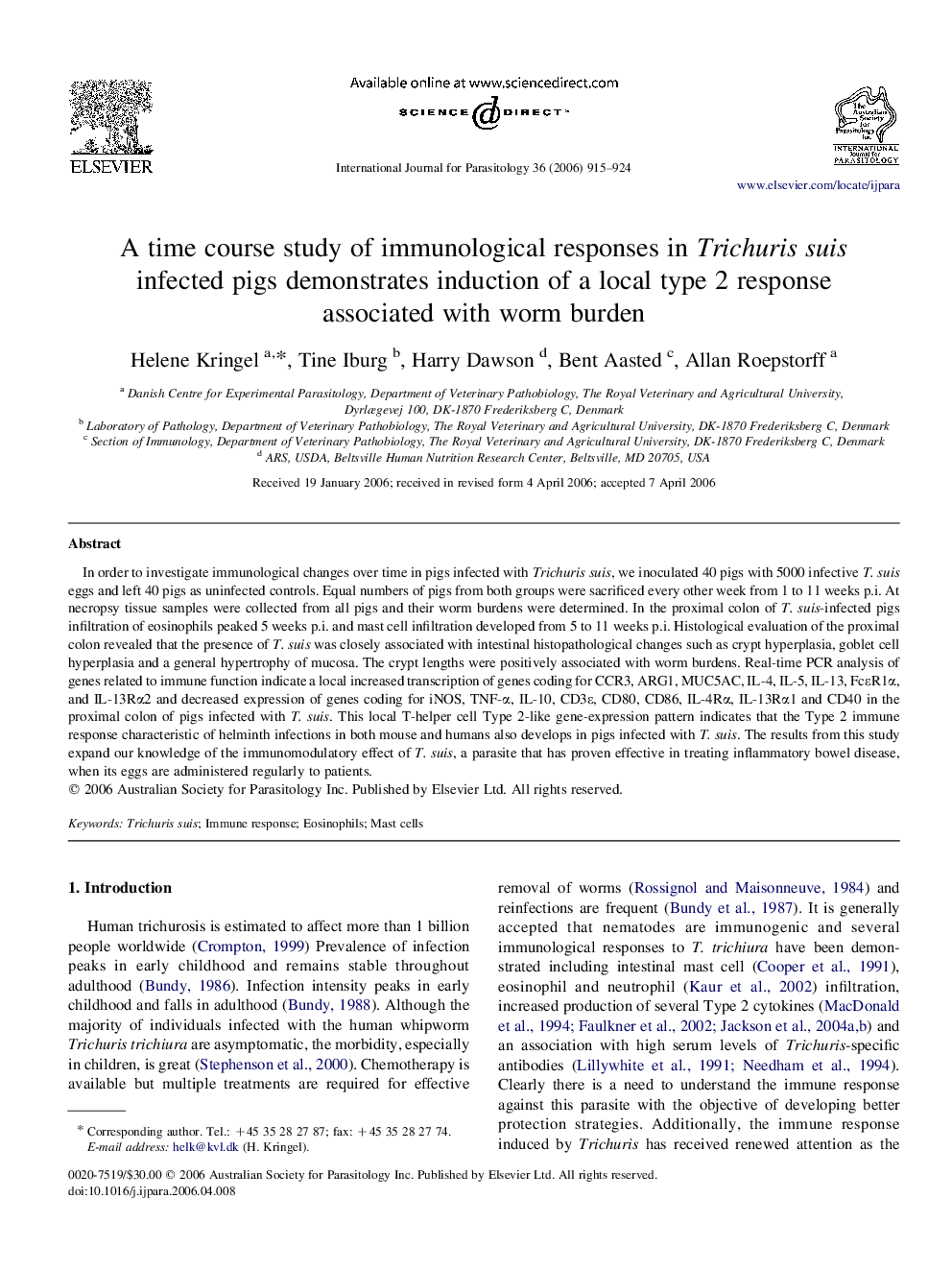| Article ID | Journal | Published Year | Pages | File Type |
|---|---|---|---|---|
| 2436913 | International Journal for Parasitology | 2006 | 10 Pages |
In order to investigate immunological changes over time in pigs infected with Trichuris suis, we inoculated 40 pigs with 5000 infective T. suis eggs and left 40 pigs as uninfected controls. Equal numbers of pigs from both groups were sacrificed every other week from 1 to 11 weeks p.i. At necropsy tissue samples were collected from all pigs and their worm burdens were determined. In the proximal colon of T. suis-infected pigs infiltration of eosinophils peaked 5 weeks p.i. and mast cell infiltration developed from 5 to 11 weeks p.i. Histological evaluation of the proximal colon revealed that the presence of T. suis was closely associated with intestinal histopathological changes such as crypt hyperplasia, goblet cell hyperplasia and a general hypertrophy of mucosa. The crypt lengths were positively associated with worm burdens. Real-time PCR analysis of genes related to immune function indicate a local increased transcription of genes coding for CCR3, ARG1, MUC5AC, IL-4, IL-5, IL-13, FcεR1α, and IL-13Rα2 and decreased expression of genes coding for iNOS, TNF-α, IL-10, CD3ε, CD80, CD86, IL-4Rα, IL-13Rα1 and CD40 in the proximal colon of pigs infected with T. suis. This local T-helper cell Type 2-like gene-expression pattern indicates that the Type 2 immune response characteristic of helminth infections in both mouse and humans also develops in pigs infected with T. suis. The results from this study expand our knowledge of the immunomodulatory effect of T. suis, a parasite that has proven effective in treating inflammatory bowel disease, when its eggs are administered regularly to patients.
